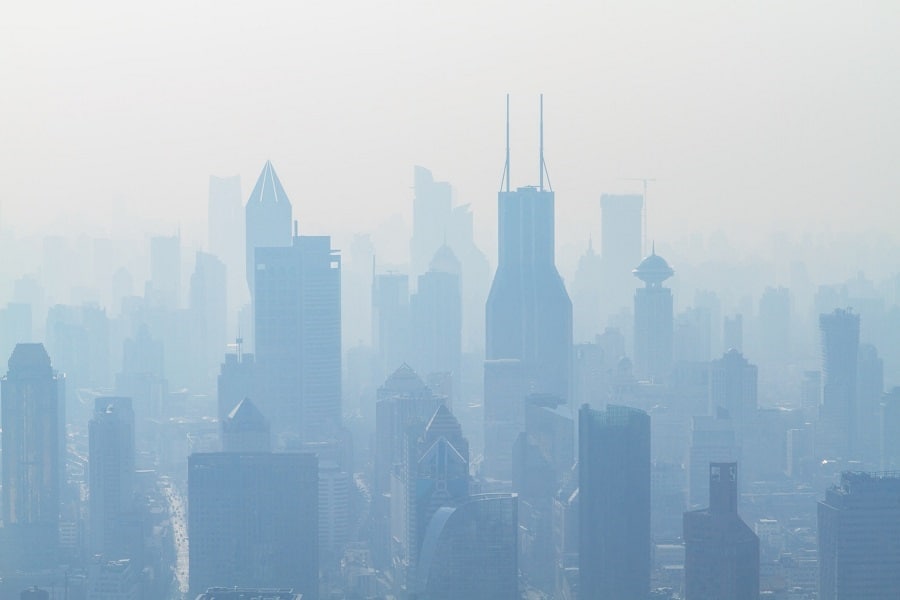Travel and Air Pollution: Best Ways to Reduce Your Contribution to Air Pollution and How to Stay Safe

One of the good things that came out of the pandemic and the resulting lockdown was that nature started healing itself. In June 2020, the global emissions fell by 17 percent compared to 2019. This was a welcome respite for cities and regions around the globe being choked by air pollution.
According to a WHO report, nearly seven million people perish every year due to air pollution. The data also reveals that almost 99 percent of the global population is breathing air that exceeds WHO’s limit for pollutants. Air pollution has been responsible for numerous respiratory and heart diseases, along with increased mortality.
One of the key contributors to air pollution has been the tourism industry with billions of tourists flying internationally. This is responsible for the massive amount of global emissions that have a significant impact on local communities and the environment. This is especially true of low-resource nations and regions.
Therefore, if you’re an avid traveler, it would be best to practice caution before preparing for your journey. Check for pollution stat of the place to plan how to protect yourself and also reduce your footprint. Here is a guide on how to do so.
Protect Yourself From Exposure
Air pollution is inevitable and there’s nothing you can do to avoid it. However, there are easy ways to protect yourself from getting affected by it.
If you’re traveling to a place that has a bad air quality index, it might cause several health issues and if you have respiratory issues, might even cause death. Here are some of the things to consider before you head out to a red zone when it comes to air pollution.
- Check the stats: Check for air pollution stats like air quality in Medford Oregon or any other place before you start planning your journey. You can head to trusted weather websites and check what the air quality index of the place is like. Good websites provide all important information like pollen index for allergy, air quality index, PM 10, PM2.5, and so on. This data will help you decide whether or not to travel to a particular location.
- Contact your doctor: Once you know the air quality index and pollution stats of your destination you must consult your doctor before heading out. Usually, this should be done to figure out allergens, required vaccinations, and other such requirements. However, with pollution on the rise and causing deaths, doctors will also suggest whether or not to travel to a particular destination. This is particularly true if you’re a senior traveler or have respiratory issues like asthma or COPD (chronic obstructive pulmonary disease). Your doctor will be able to suggest oral steroids, inhalers, and antibiotics to keep you safe. Just for safety, pregnant women and children must avoid traveling to places with a critical level of pollution.
- Pick the right mask: There’s nothing more important than a face mask to help you against pollution. Talk to your doctor or healthcare provider about whether a face mask will help you battle pollution. While these masks cannot fully protect against all types of pollutants, they can reduce exposure to primary pollutants and those that are larger. If you decide to go with a mask, get one that perfectly fits your face and choose between either N95 or N99 mask, which are the most effective kinds.
Don’t Add to the Crisis
Once you have decided to travel it becomes your responsibility to ensure that your travel plans and stay in a particular place don’t add to the air pollution in the area. Traveling is a privilege and we must be respectful to people and location, and be conscious of our footprint on pollution in that particular area. Here are some methods that will help reduce your impact.
- Consider flight alternatives: If you can reach the destination using a private vehicle, bus, or train, that would be the best way to travel. However, if you must take a flight, consider non-stop flights to reduce your carbon footprint. While the number of flights is not that important, a plane produces the most amount of emissions during take-off and landings, which increases with every flight you take.
- Use public transport: While at the destination, try to use a tour bus, bike, or public transit to get around instead of cars and taxis. This way not only will you be opting for less polluting transportation but also supporting the local economy.
- Support local initiatives with sustainable practices: When you make your travel plans, ensure to pick an agency that supports sustainable practices. Opt for a hotel, tourism company, and other travel services that have employed or promoted sustainable means of energy production and other daily requirements.
These are how you can protect yourself from the adverse effects of air pollution but also help regulate the pollution level in the place. It’s only fair for the travelers to be respectful of the destination they are visiting and its locals, who have to bear the brunt of the pollution in day-to-day life.
